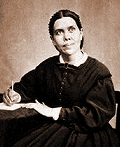The Dedication
This chapter is based on Luke 2:21-38.
About forty days after
the birth of Christ, Joseph and
Mary took Him to Jerusalem, to
present Him to the Lord, and to offer sacrifice. This was according
to the Jewish law, and as man's
substitute Christ must conform to the law in every particular. He
had already been subjected to the rite of circumcision, as a pledge
of His obedience to the law.
As an offering for the mother, the law
required a lamb of the first year for a burnt
offering, and a young pigeon or a turtledove for a sin
offering.1
But the law provided that if the parents were too
poor to bring a
lamb, a pair of
turtledoves or two young pigeons, one
for a burnt offering, the other for
a sin offering,2 might
be accepted. |
Forty days after the
birth of Jesus, Joseph and Mary
carried the infant up to Jerusalem.
There was a double object in this visit. Mary had to present
the offering which the Jewish law
required at the hands of every mother when the
days of her purification were accomplished. This
offering, in the case of all whose circumstances enabled them to
present it, was to consist of a lamb of the
first year for a burnt-offering, a young pigeon or a turtle-dove
for a sin-offering.1 With that consideration for the
poor which marks so many of the
Mosaic ordinances, it was provided that if
the mother were not able to
furnish a lamb, a
pair of turtle-doves or
two young pigeons
were to be accepted, the
one for the burnt-offering,
and the
other for the sin-offering.2
That such was the offering which Joseph and Mary presented
to the priest, carried with it an unmistakable evidence of
the poverty of their estate. Besides discharging this duty,
Mary had at the same time to dedicate her infant son as being
a first-born child to the Lord, and to pay the small sum
fixed as the price of his
redemption. |
And when the days of her purification according to the law
of Moses were accomplished,
they brought him to Jerusalem, to present him to the Lord;
. . .
And to offer a sacrifice according to that which is said in the law of the Lord,
A
pair of turtledoves, or two young pigeons.2 (Luke 2:22-24)
And when the days of her purifying are fulfilled, for a son, or for a daughter,
she shall bring a lamb of the first year for a burnt offering,
and a young pigeon,
or a turtledove, for a sin offering,1 unto the door of the tabernacle of the
congregation, unto the priest: . . . .
And if she be not able to bring
a lamb, then she shall bring two turtles, or two
young pigeons; the one for the burnt
offering, and the other for a sin
offering:2
and the priest shall make an atonement for her, and she shall be clean.
(Lev. 12:6-8)
|


